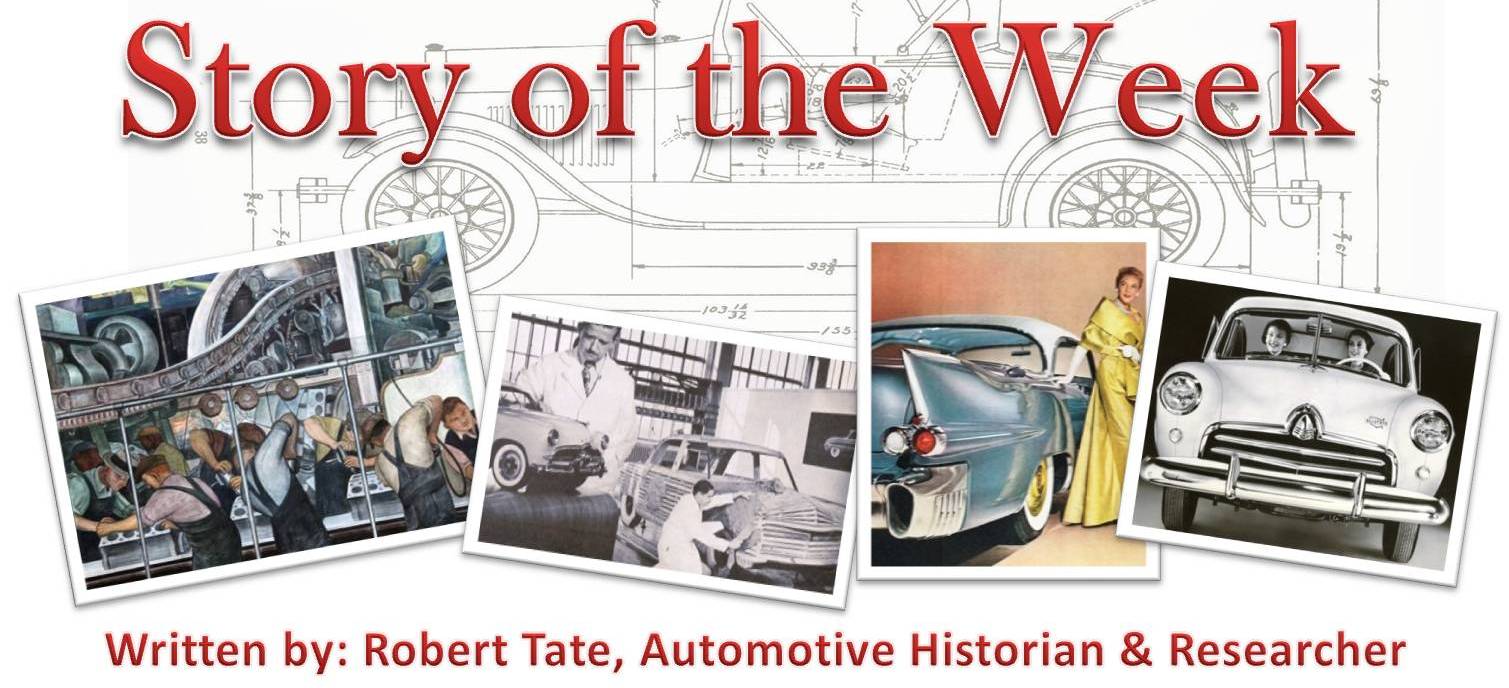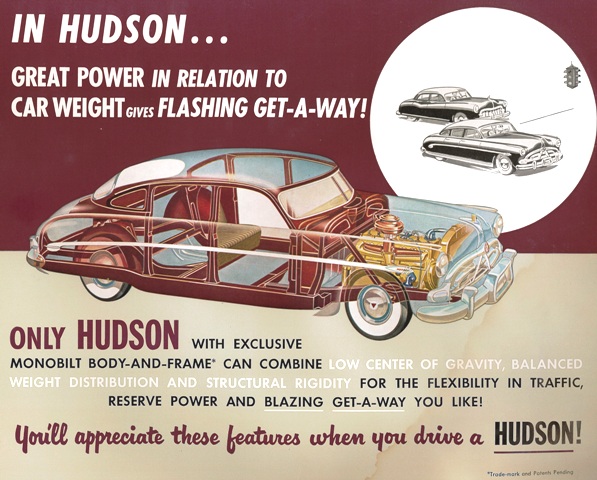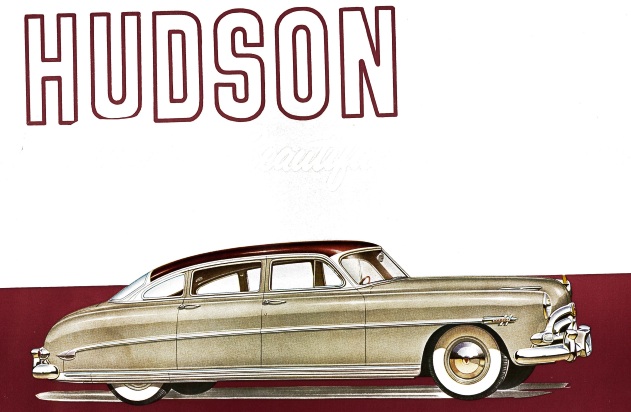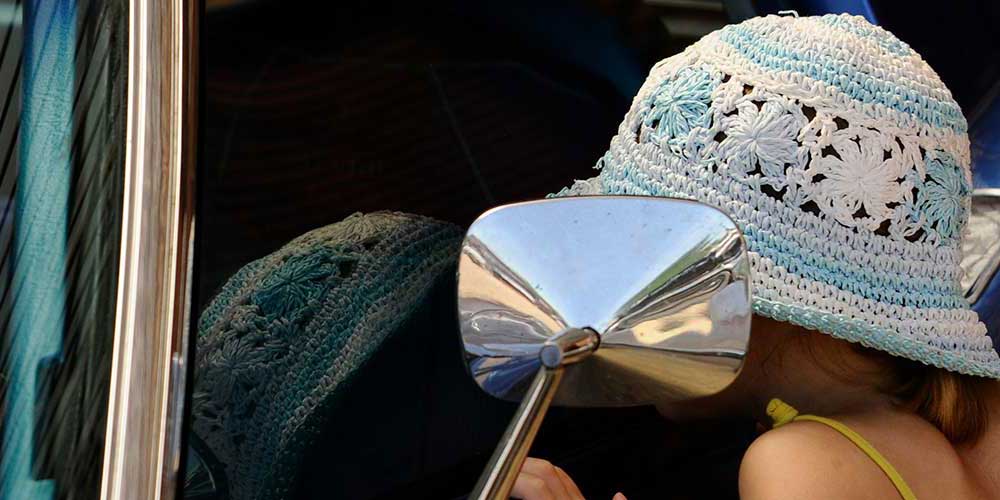By: Robert Tate, Automotive Historian/Researcher
Images: Courtesy of the National Automotive History Collection
Posted: 09.30.2015

After WWII had ended, the automotive manufacturers were looking for both new ways to sell automobiles and for more innovative automotive designs to offer. In 1948, the Hudson Motor Car Company introduced a new model which featured many novel and popular accessories. The 1948 Hudson models became a huge success among consumers. Most people thoroughly enjoyed its new appearance.

Production of 1948 Hudson models began on Oct. 12, 1947. The manufacturing production consisted of a total of 117,200 units produced. It was known as the most radical car that Hudson had ever built and manufactured within its history.
With the lowest center of gravity of any American car of the time, they were called the “step-down” models. One of the most talented designers responsible for the design of the 1948 Hudson was my good friend the late Don Butler. He worked alongside Arthur Michael who was also very much involved with the design process. They worked with many other talented designers and engineers to produce this fascinating vehicle.

The 1952 Hudson models offered great streamlined design in addition to the Hudson-Aire hardtop styling and its striking lower look. Advertisements for the 1952 models suggested that with Hudson you are safer because of their exclusive step-down Momobilt body-and-frame. The 1952 Hudson models continued to offer their signature low roof-line design. The floor plan for the interior was sunken between the frame rails to maximize headroom for the passengers and the drivers.
These Hudson models offered great power along with durability and high performance and quality to their consumers. In 1952, the Hudson Motor Car Company manufactured over 70,000 units in that year alone. The most popular Hudson models for the year were the Hornet series which accounted for 35,921 of those models.

During the early 1950s, Hudson models were responsible for many racing achievements as they set high records on the racetracks. Dick Rathman and other leading drivers including Marshall Teague, Herb Thomas, Tim Flock and Buck Baker dominated the stock car racing circuits with their Hudson Hornets in 1952. The late Marshall Teague and Herb Thomas both received trophies for their high-speed racing during the Daytona Beach races. Teague won race after race and it wasn't long before other drivers began switching over to Hudson Hornet models as well. Marshall Teague was also the winner of the National AAA Stock Car Championship in 1952.

The Hudson models were fast performing vehicles. This was not just because of their advanced styling but also due to their high-performance Hornet 145-horsepower engines which many consumers thoroughly enjoyed. Hudson engines were the biggest and most powerful six cylinder engines within the American auto industry and that was proven on many popular race tracks. However, Hudson’s racing success didn’t help its overall business which had dropped in 1950s. Unfortunately, by 1952, the large Hudson models were not selling very well forcing Hudson to drop the Super Six models for that year.
For consumers with families, the Hudson Wasp or Commodore models were the most popular with a price tag of $2,769 dollars. In 1952, Hudson introduced the Wasp model to take the place of the Super models. Body interiors included restyled upholstery of three dimensional patterns made nylon cord material. The massive front end of the new Hudson models offered a lower, wider line that added to the cars “hug the road” styling. The radiator ornament had been moved forward to further extend the sleek, low sweeping hood lines and for the first time Hudson offered a simplified and convenient key starting ignition system.

In conclusion, the 1948-1952 Hudson models were innovative game-changing vehicles. Michael Lamm along with the late Dave Holls said this about the “step- down” design, “Hudson’s 1948 “step-down” construction revolutionized the way all automakers built bodies. Today nearly every car maker in the world uses a variation of this same format, with an integral perimeter frame plus floor wells front and rear. Step-down architecture allowed Hudson to lower its cars five inches so that its seat benches were wider than the car was tall”. For these reasons and more, the step-down Hudson models will always be a part of our automotive heritage.
A special thanks to Robert Tate, Automotive Historian and Researcher, for donating the story to the MotorCities Story of the Week program. Photographs are courtesy of the National Automotive History Collection. (Bibliography: Butler Don. “The History of Hudson”. Crestline Publishing 1982. Lamm Michael & Holls Dave. “A Century of Automotive Style 100 Years of American Car Design”.1996-1997. The HudsonColor/Trim Dealer Album for 1952. )
For further information on photos please visit http://www.detroitpubliclibrary.org/ or email This email address is being protected from spambots. You need JavaScript enabled to view it.. Please do not republish the story and/or photographs without permission of MotorCities National Heritage Area.
If you would like to contribute an article for the MotorCities newsletter, email This email address is being protected from spambots. You need JavaScript enabled to view it. or call 313-259-3425.



